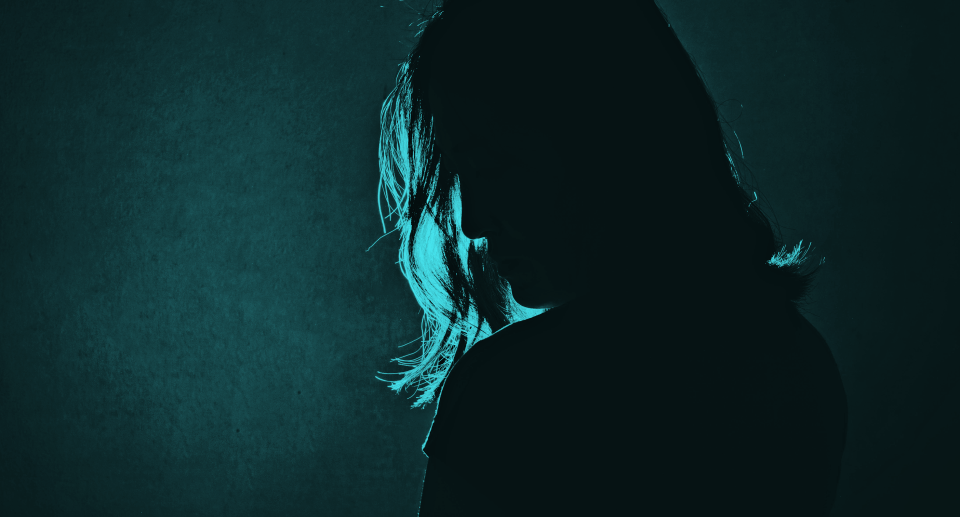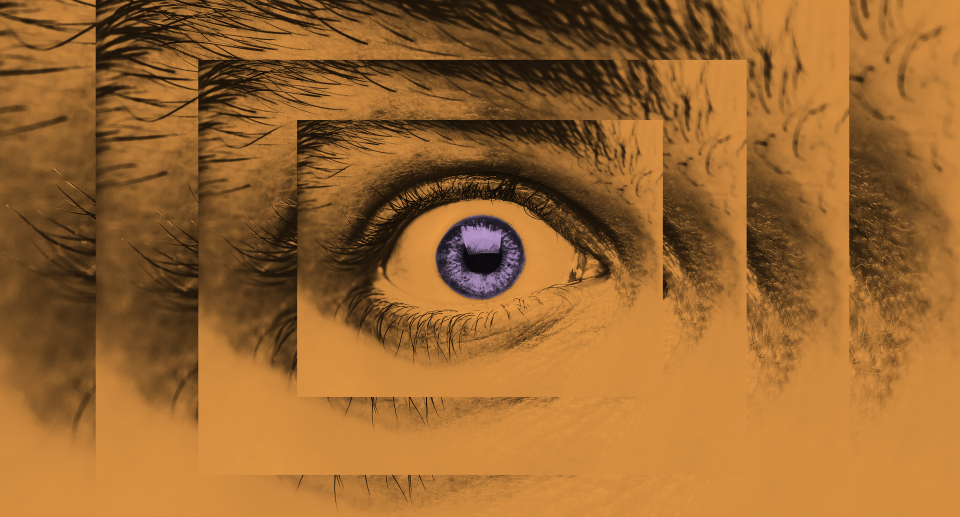Ghost 'sightings,' as explained by science
“Ghosts are real” is an extremely common belief — one held by 45 percent of Americans, according to a recent YouGov poll. That’s just slightly less than the percentage (56) of Americans who believe in a biblical God, according to the Pew Research Center.
But what about the rest of the country? That would be the skeptics, in varying degrees. Yahoo Lifestyle turned to several, with backgrounds in psychology and an interest in the paranormal, to find some reasonable explanations for when people say they see, hear, feel or otherwise experience hauntings.
We’re far from the first to look for answers.

“For over 200 years, many people, even scientists, have sought evidence for ghosts and life after death,” writes Sharon A. Hill, a paranormal researcher and author of Scientifical Americans: The Culture of Amateur Paranormal Researchers, in a recent blog. “There are millions of pages of previous research and experimentation into paranormal ideas. Definite proof has never been found.”
But according to Benjamin Radford, author of Investigating Ghosts: The Scientific Search for Spirits, logical explanations are abundant. “There are various reasons why people experience ghosts — or, more correctly, experience what they interpreted as ghosts.”
Here’s how the experts break it all down.
The power of context and belief

“The two most powerful psychological factors implicated in hauntings are context and belief,” Christopher French, a professor of psychology and head of the Anomalistic Psychology Research Unit at the University of London, tells Yahoo Lifestyle. Meaning, simply, if a person expects a place to be haunted, then they’ll more likely see it that way.
“Studies show that if people are told that a location is haunted, they report more anomalous experiencers — sense of presence, shivers down the spine, changes in temperature, etc. — than if that suggestion is not given to them,” he says, adding that “believers in the paranormal are more susceptible to such suggestions than skeptics.”
That’s true in many situations, adds Terence Hines, a professor of psychology at Pace University who’s interested in “why people believe things that aren’t true,” particularly on the many popular ghost hunter shows. “People go into what they expect to be a haunted house — and that word ‘expect’ is really important here,” he tells Yahoo Lifestyle. “So, if anything happens — if you feel a little chill or a little heat or you feel something in your hair or there’s a little noise or a door creaks — no matter what it is, it’s interpreted as evidence of some kind of paranormal event or haunting. It’s all based on expectations.”
Another way to think about this power of suggestion is as a “psychological priming,” which varies from person to person. And if someone’s belief system is from a place of deep belief in ghosts, then attributing even the most mundane of unexplained events to the supernatural will be easy, says Radford, a research fellow with the nonprofit Committee for Skeptical Inquiry.
“It’s not, you know, a little girl possessed by demons with her head spinning around. No. When you talk to ordinary people and their ordinary experiences with ghosts, what you find is that most of them are very mundane,” Radford says. “It's keys that are missing. They'll say, Oh, that, that silly little ghost, she moved my keys! Or a bulb will burn out, little things like that, within the context of a belief in a ghost or in the haunted house.”
Cultural psychology
This is when people take context cues from pop culture, and apply them to real-life scenarios.
“They get their ideas from horror films, from TV shows, like, you know, ghost hunters on cable or, and ghost adventures and things like that,” says Radford. “So even cases where somebody can go see a horror film, a Poltergeist, and of course they know it's a fictional film. They understand these are actors, there's a script, these are special effects, but they also believe that this actually happens in real life.”
Hallucinations

While people typically think of ghostly encounters as involving “someone seeing a spooky transparent apparition,” says French, the fact is that people often refer to experiences involving other senses, “such as hearing voices or footsteps, smelling perfume or tobacco, or feeling [as if they are] being touched. It may even be simply a very strong ‘sense of presence.’”
And there are many possible explanations, he says. “For example, hallucinatory experiences are far more common in the non-clinical population than is generally realized,” French notes, with one particularly common example being what’s called sleep paralysis. “This occurs in that state between sleep and wakefulness, and involves a period of temporary paralysis sometimes accompanied by vivid hallucinations.”
There are, of course, some neurological conditions that might lead to frightening hallucinations, but in most cases, he says, no such conditions are required. “The common phenomenon of seeing faces in random visual shapes such as clouds, shadows or the patterns in wallpaper is a perfectly normal phenomenon,” he points out. “It would only be when a person sees tremendous meaning and significance in such perceptions that there might be a cause for concern.”
Sense of Presence, or Feeling of Presence (FoP), is “more mystical” than, say, a visual hallucination, neurologist Olaf Blanke of the Swiss Federal Institute of Technology in Lausanne told New Scientist in 2014, when he studied the phenomenon. “You are convinced that there is something, but you don’t see anything, you don’t hear anything.”
A phenomenon called “promiscuous teleology”
“It’s a fancy phrase that basically just means you're over-interpreting meaning and purpose around you,” says Radford. In other words, you’re projecting your own personal stuff onto the situation — hear a creaky noise? It must be ghost.
“One example is a young child who sees a tree fall on a house,” he says. “And then we ask the child, ‘why did the tree's limb fall on the house?’ and they may say, ‘well, the tree was angry at the house and hit the house.’ And when kids are angry, they hit.”
Electronic interference

Despite the usage of EMF (electric and magnetic fields) detectors as ghost-hunting gear, Radford says, “there's no actual scientific evidence” that they work.
“So, the problem is that people have been using these devices for decades, and nobody has ever demonstrated that there's any connection between EMF fields and ghosts,” he says. “It’s a theory. It's an idea. It's an assumption. But there's no actual evidence that that's true.”
Same goes with the “aura stuff” such as in a recent case when parents believed that a glowing orb seen on their infant’s baby monitor indicated some sort of ghostly presence.
Adds Hines about strange baby monitor imagery, “Again, it’s some kind of interference, those things aren’t particularly high-tech. If they’re sensitive enough, they can pick up electromagnetic from a passing cell phone, or something like that.”
The main things that ghost hunters get with their tracking devices, Hines says, is “publicity” and “a good time,” but, he contends, “they don’t understand how science is done. Even if they take fancy equipment, if they calibrate it, they don’t understand what the readings mean. Any little wiggle is going to be taken as evidence of a ghost.”
Logical explanations
Finally, notes Hines, plenty of studies go a long way to explain cases of “alleged hauntings,” but other factors may be involved as well. “For example,” he says, “many initially ‘inexplicable’ events turn out to be explicable upon further investigation. The movement of small objects may be caused by vibrations from passing traffic. Just because someone cannot think of an explanation for an event does not mean there isn't one.”
As for why people seem so eager to believe in ghosts and other evidence of the hereafter? That’s easier to explain, says Hines. “The ghost hunting technology has gotten cheap enough so that regular folks can afford it, and with people getting less entranced with mainstream religion, some are looking for some kind of transcendent experience.” Finally, he points out, “We’re all going to die, and most of us would like to think there’s something thereafter.”
Read more from Yahoo Lifestyle:
I’m a skeptic who stayed at a haunted hotel — and I still can’t believe what happened
J. Lo’s psychic gives readings to Yahoo fans — and her revelations will shock you
Follow us on Instagram, Facebook, Twitter and Pinterest for nonstop inspiration delivered fresh to your feed, every day.


